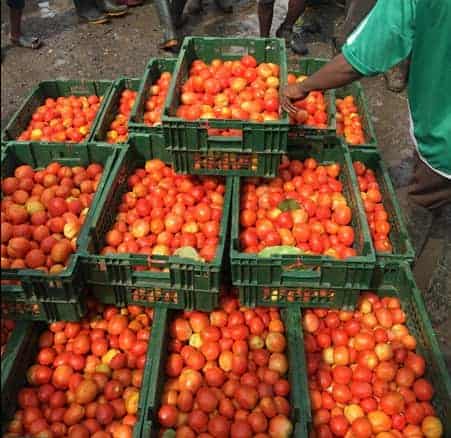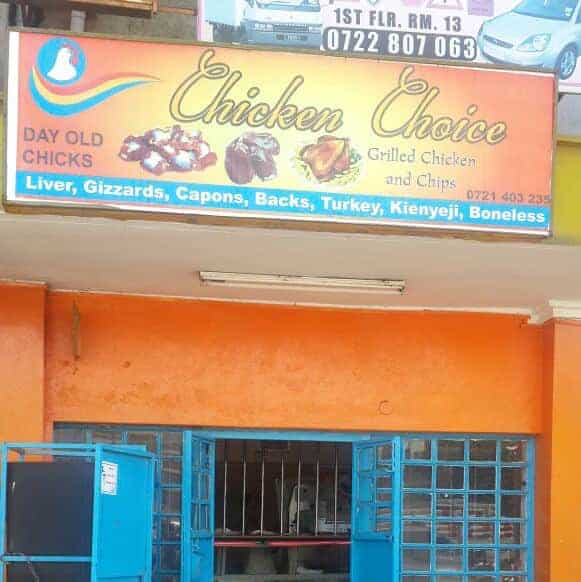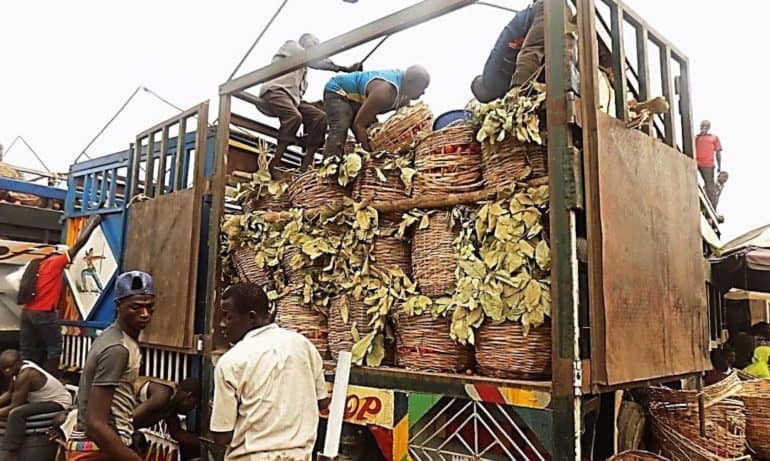In Kenya, a small company wanted to sell whole chickens, but the lower income household members near the shop couldn’t afford the up-front costs of an entire chicken nor would it keep in the absence of refrigeration. The solution? Change the portion size of the product and work with the business owner to market small individual packages of chicken parts at a more affordable price. In Nigeria, truckloads of tomatoes were showing up at local markets with half of their haul having been destroyed during transport. The solution? Replace the malleable woven baskets that were stacked on top of one another and crushing the tomatoes with reusable plastic crates that could protect the fragile fruit from the trauma of bumpy, unpaved roads.
These supply chain interventions sound like projects undertaken to help food producers and sellers improve their businesses. In fact, they’re examples of projects that aim to improve global nutrition, via initiatives set up by the Global Alliance for Improved Nutrition (GAIN).
While GAIN is involved in more traditional approaches to improving nutrition in impoverished communities (like fortifying staple foods and nutrition education) its work linking agriculture to better nutrition—especially via the supply chain that moves food from farm to table—is unique.
“GAIN’s overall purpose is to improve the consumption of nutritious food for everybody, but especially the most vulnerable populations,” says executive director Lawrence Haddad. “We try to do that through food systems, because that’s where most people get their food.”

Harvest to Health
While that connection (food is where nutrients come from, yes!) seems incredibly basic, nutritionists and others working in the field have historically been absent from discussions about what kinds of food should be produced in the first place and how that food will get to people who need it.
However, to really improve diets in poor countries where malnutrition is a massive issue, explains food value chain director Bonnie McClafferty, you must ask certain questions first.
“We have a set of criteria where we say: Is the food that we would promote going to meet a nutritional burden? Is it protein that’s a problem? Is it iron that’s a problem?” she says. “And we would ask what do you currently eat? Are more nutritious foods available and affordable for nutritionally vulnerable populations? How can we help those better foods travel the last mile onto your plate.”
Generally, GAIN does this in two ways, by focusing on individual commodities and by focusing on the infrastructure that is necessary to support them. For example, if the work was being done in a country in which the ministry of health identified inadequate protein as a major issue and eggs were being produced, they would start asking questions about why those eggs weren’t getting to the malnourished people that needed them. “You have to unpack that whole supply chain and environment that surrounds it and say ‘Where are these foods getting stuck? and ‘How can we innovate our way beyond those barriers?’” McClafferty says.
Kinks in the Chain
Even in larger conversations about food systems, discussions tend to focus on farming or eating. What’s in between—like trucking, refrigeration, and infrastructure—is decidedly unsexy, and important.
Haddad refers to it as the “mysterious world beyond the farm gate,” a sort of invisible journey that is starting to come into clearer focus. “More people are talking about food systems, but a lot of people don’t know about the journey of food from soil to gut,” he says. “Beyond the farm gate is a very undocumented journey and there’s a lot of stuff that needs to be done in that area and recorded.”
GAIN has two main programs that focus on this realm, which they call Food Value Chains.
The first is the Postharvest Loss Alliance for Nutrition (PLAN), which has local projects operating in Nigeria, just revving up in Indonesia, and in the early stages of development in Ethiopia. PLAN focuses on figuring out why nutritious foods that are being produced aren’t making it to people who need them. The tomatoes being destroyed by old crates in Nigeria is one example. In Indonesia, PLAN is working on more efficient ways of getting fresh fish from the ocean to local, low-income communities. While many of the interventions have broader implications (fix a refrigeration issue related to fresh tomatoes and it’ll likely increase refrigeration of other perishable fruits and vegetables that need cold storage), focusing on one commodity allows GAIN to tie the intervention to specific nutrient benefits. Saved tomatoes, for example, can be measured in how much additional vitamin A is available to malnourished children.

The second program is the Marketplace for Nutritious Foods. Currently operating in Kenya and Rwanda, it supports small and medium-sized businesses that are selling nutritious foods to low income consumers, providing technical assistance and/or financing for them to scale up their business operations or solve problems that are preventing low-income people from accessing their food. This includes the aforementioned infrastructure needed to process whole chickens into more affordable small chicken pieces. “These guys are one step away from the folks who are poor and malnourished, so that’s the focus there,” explains McClafferty.
Making It Work
To make all of this possible, GAIN emphasizes securing support from both governments and the private sector.
While other NGOs balk at working with private sector food companies, Haddad says, he sees it as a key strategy that allows the organization to leverage financing, technical expertise, and more. “We have the capacity and expertise and experience and tools to figure out who is good to work with and who is not good to work with,” he explains, and they take the process of determining that seriously.
Haddad and McClafferty also both emphasize that to make this work effective, measurement is key. They build detailed evaluation mechanisms into every project and stay nimble in terms of changing course if they discover something isn’t delivering the intended results.
“We have to take apart our model to see as we go,” McClafferty says. “It’s kind of a living thing, and we’ll refine it based on what we call implementation research. Is it implementing well and getting to the goals? Are there better ways to do it?”
In the end, whether it’s chicken or tomatoes, the project has to be making a measurable impact in terms of getting more nutritious foods to vulnerable populations.
“Aligning supply chains with human need is quite an interesting challenge,” she says. “But we can’t ignore the fact that the food system is either providing adequate nutrients and good diets or it’s failing. And it’s not failing to do what it’s supposed to do—which is just produce more food—but it might be failing us in terms of our health.”
This article was written in partnership with the Global Alliance for Improved Nutrition (GAIN). GAIN is a non-profit organization who works with partners around the globe to make healthier food choices more affordable, more available, and more desirable. GAIN’s purpose is to improve nutrition outcomes by improving the consumption of nutritious and safe food for all people, especially the most vulnerable. Photographs courtesy of GAIN.











